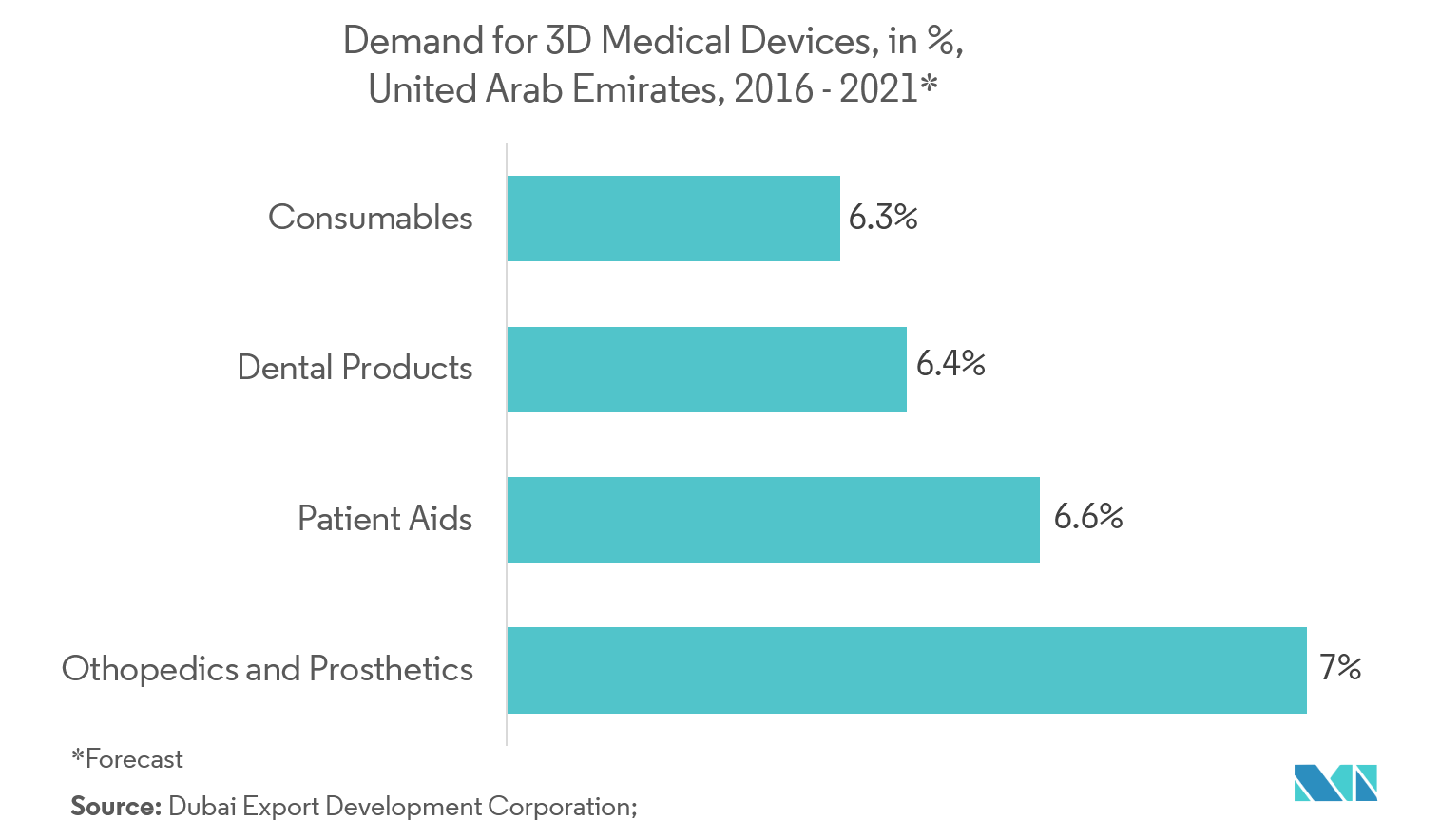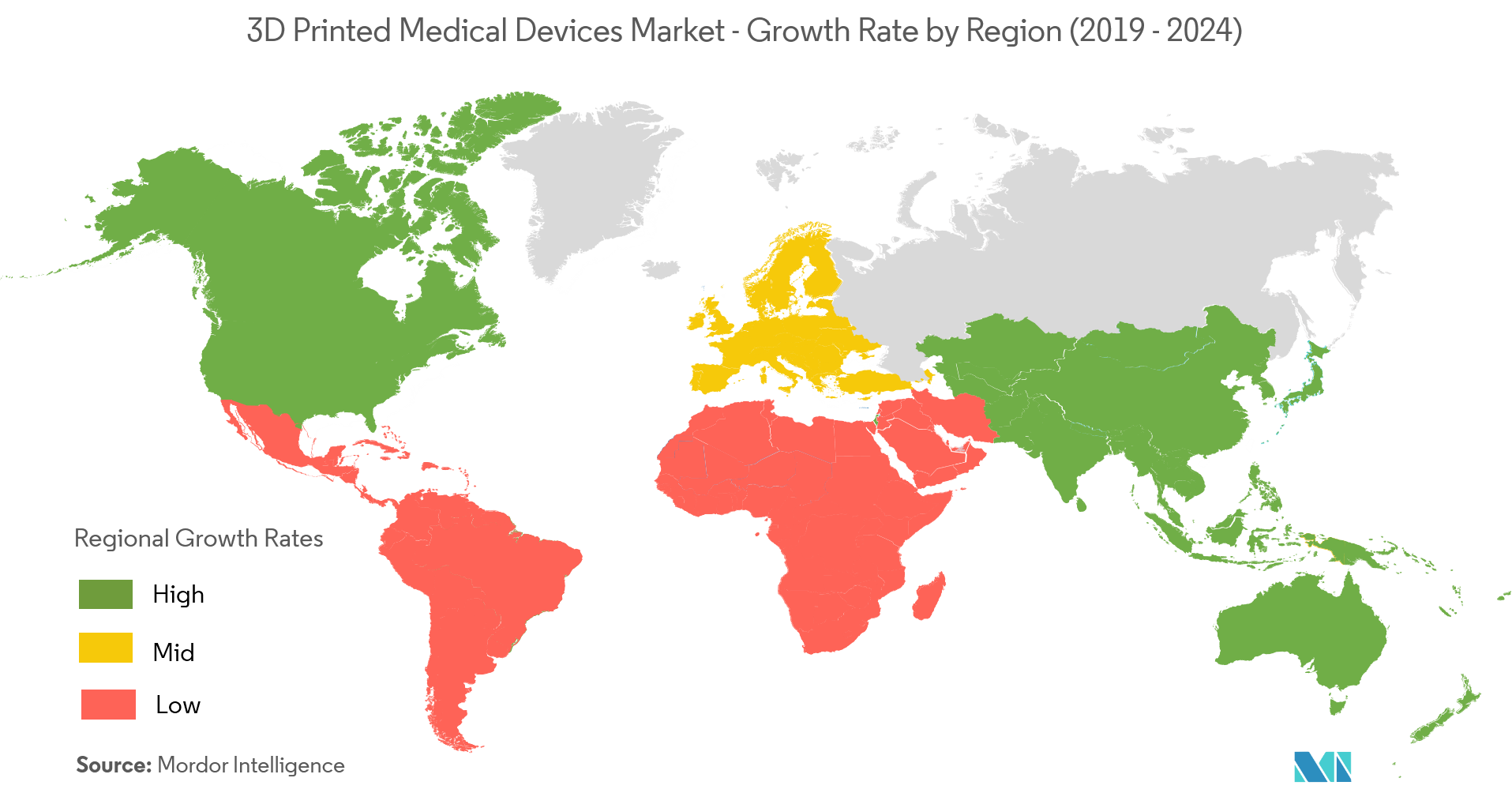Market Trends of 3D Printed Medical Devices Industry
This section covers the major market trends shaping the 3D Printed Medical Devices Market according to our research experts:
Orthopedics and Prosthetics is Expected to Have the Fastest Growth
- One of the advantages that 3D printers in medical devices provide is customized medical products and equipment. Thus the custom-built prosthetics and implants provide value addition for both patients and doctors. Also, customized implants, have a positive impact in terms of the time required for surgery, patient recovery time, and the success of the implant.
- For instance, in January 2019, Apollo Hospitals, at Mumbai in India performed a 3D printed titanium skull implant on one it's patient. 3D-printed titanium implant was opted because it would closely replicate the shape of the patient's skull. These 3D printed implants are MRI compatible, decrease the risk of infections and most importantly can be made to fit the patient's form.
- Moreover, 3D printed prosthetics help in improving the posture and balance for people suffering from Achondroplasia, a genetic disorder characterized by short-limbed dwarfism that is apparent at birth. According to the National Organization for Rare Disorders, the estimated frequency of achondroplasia has ranged from about one in 15,000 to one in 35,000 births.
- Further, according to the World Bank, the estimated share of the U.A.E.’s population above the age of 65 will increase to 4.4% by 2030 from 1.1% in 2018. This will stimulate demand for healthcare in general and geriatric care in particular which will create a demand for orthopedics products related to knee and hips.
- The Governments of the UAE has pledged to create a world-class healthcare facility in the UAE. They also want to boost medical tourism in the UAE by establishing Dubai as the center. The Emirate’s good connectivity to the rest of the world through its airline and airport ensures that health tourists will be able to get to the Emirate in an expeditious manner.

North America to Account for the Largest Market Share
- The United States medical devices industry is known for offering high-quality products using advanced technology resulting from significant investment in research and development.
- According to the American Society for Aesthetic Plastic Surgery, around thirty thousand breast augmentations were performed among women in the United States in 2018. This breast augmentation is one of the five most common surgical cosmetic procedures among women in the United States in 2018. Further, the use of 3D implant avoids the complications and side effects that are associated with other implants such as implant leaking, contracting, rippling, or rupturing. Additionally, it also reduces surgery time and increases patient recovery time.
- Moreover, opportunities for expansion of U.S. medical device comes from specific key ongoing policy and activities. For instance, the U.S. Food and Drug Administration (FDA) in 2017 has reviewed more than 100 devices that were produced on 3D printers. These include knee replacements and cranial implants.
- Additionally, the FDA is also working to establish a regulatory framework with regards to applying existing laws and regulations that govern device manufacturing patients they are treating. To keep pace with evolving technology as well as encourage and support innovation, the FDA is involved in several research activities.
- For example, in 2016, the Radiological Society of North America (RSNA) launched the 3D Printing Special Interest Group (SIG). Intending to support radiology-centered, hospital-based, point-of-care 3D printing to impact more patients, they had set up several committees to work in different areas. The areas include prosthetics, Anaplastology, regulatory and compliance, and simulations amongst others.
- Apart from being the world's largest producer of medical devices, the United States is the largest consumer of these as well. Thus, 3D printed medical devices market is expected to witness significant adoption in several areas of the United States healthcare sector.


